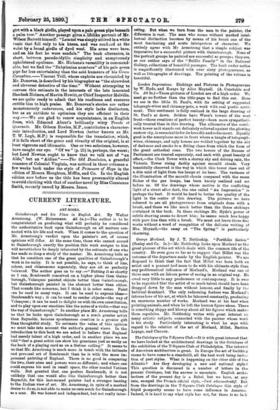George Morland. By J. T. Nettleship. "Portfolio Series." (Seeley and
Co. 59.)—Mr. Nettleship looks upon Morland as the great pioneer of the art which deals with the common life of the country. He even goes so far as to suggest that Millet was the outcome of the departure made by the English painter. We are disposed to think that the fact that Millet was born both an artist and a peasant had more to do with his ultimate style than any problematical influence of Morland's. Morland was one of those men with an inborn power of seeing in an original way. He owed very little to any predecessor or contemporary. It is ever to be regretted that the artist of so much talent should have been dragged down by the man without honour, and finally by the habitual drunkard. The only redeeming feature was Morland'-; intense love of his art, at which he laboured constantly, producing an enormous number of works. Morland was at his best when painting animals, and when he left the human figure alone. There is something sloppy and blowsy about all his figures which makes them repulsive. Mr. Nettleship writes with great interest on many artistic subjects connected with the painter whose work is his study. Particularly interesting is what he says with regard to the relation of the art of Morland, Millet, Bastien Lepage, and Clausen.






































 Previous page
Previous page